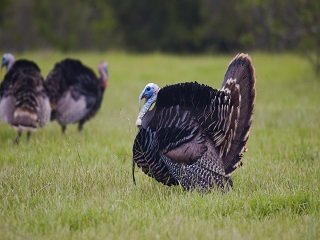 Somewhere in the Deep South, a few turkey seasons have just opened. For the rest of us, though, there’s still a small amount of time to get ready for whatever opener that lays ahead. Now is the time to tighten up your game plan.
Somewhere in the Deep South, a few turkey seasons have just opened. For the rest of us, though, there’s still a small amount of time to get ready for whatever opener that lays ahead. Now is the time to tighten up your game plan.
By now, your scouting should be complete. If you are still looking for some hot spots for big gobblers, make sure you don’t get suckered when you see large groups of birds somewhere as it is still possible that they can be in winter groups. As cold as most of the country has been in February and March, winter groups might be waiting for a warm spell before they break up and go to their perspective home range. Don’t get fooled.
If you are the type of hunter who likes to buy a new call or two before every season, now is the time to master that call to eliminate any surprises come opening day. There is nothing worse than pulling out a new call and having it sound like a sick moose, or worse. Practice is essential and even though we all know this, some will still ‘wing it’ and end up scaring birds over to their neighbor’s property.
Besides calls, if you bought a new pair of boots or a new turkey vest, you need to break your boots in to avoid hot spots and blisters. Also, if your boots do not fit properly, you might still have time to exchange them for a better fitting pair. Turkey vests have a lot of pockets, zippers and Velcro these days and you will need to make some dry runs with your new vest to figure out what fits where.
During my time as a turkey guide, I once bought a brand new vest from Cabela’s and never worked out the bugs in it before I hunted with it. It was noisy and I had to tape down some plastic buckles while in the field. Which is a reminder, always carry a roll of electrical tape. If your new vests comes with an attached seat, figure out how it works and how to deploy it as quietly as possible. It is just plain nuts to find out all these little idiosyncrasies when setting up on a hot bird.
Finally, make sure you are not going to be wearing anything shiny or brightly colored. If you are, cover the parts or pieces with camo tape or get them painted.








